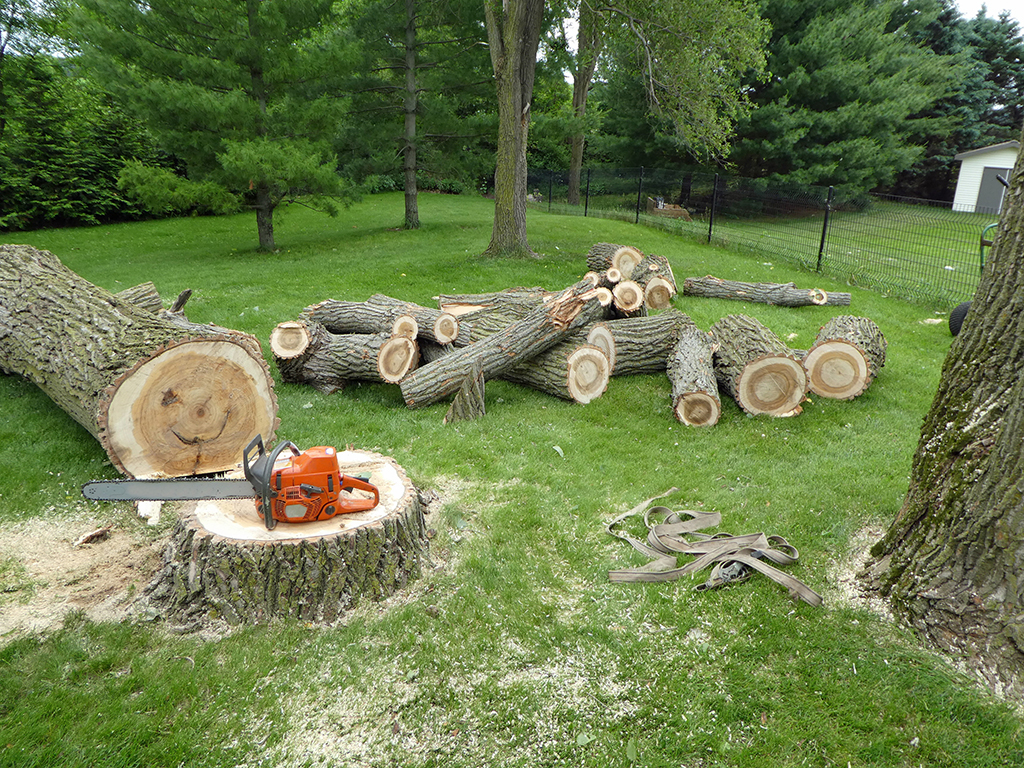
After cutting down a tree or clearing out overgrown landscaping, your yard might look dramatically different—but not necessarily clean. You may be left with muddy soil, wood chips, sap stains, leftover leaves, and even debris stuck to your siding, fencing, or hardscapes. The question many homeowners ask at this point is: Should I power wash after yard clearing or tree removal?
In most cases, the answer is a definite yes—but there are a few key things to consider to avoid damage and make the most of your effort. This guide explains when and how to use power washing to clean up after outdoor clearing projects 🌿💦.
🧹 What Kind of Mess Is Left Behind?
Tree and yard clearing typically leaves behind a unique set of messes:
- Sap and tannin stains on patios, decks, or driveways
- Sawdust and bark ground into hard surfaces
- Mud and soil splatter from exposed ground
- Leaf and branch residue stuck to siding or fencing
- Moss, mildew, and algae exposed beneath dense vegetation
- Discoloration or staining from decaying organic matter
These aren’t the kinds of messes a broom or hose can handle effectively.
💧 Why Power Washing Helps After Tree Removal
Power washing offers several key benefits after heavy outdoor cleanup:
✅ 1. Removes Stains from Organic Debris
Tree sap, rotting leaves, and dirt can leave behind long-lasting discoloration—especially on concrete, pavers, and wood. Power washing helps lift these deep stains.
✅ 2. Prepares Surfaces for Repair or Restoration
If you’re planning to reseal your deck, repair a patio, or replant grass, a clean slate is essential. Power washing clears away the debris so you can spot damage and prep correctly.
✅ 3. Improves Drainage and Safety
Built-up mulch, bark, or dirt in gutters and along paths can block drainage and create slippery surfaces. Power washing clears those hazards efficiently.
✅ 4. Restores Your Property’s Appearance
Removing a tree often exposes siding, fencing, or pathways that haven’t seen daylight in years. Power washing brings these surfaces back to life and makes the entire yard feel cleaner and more polished.
Browse Amazon Here For Top Rated Power Washers And Accessories
🛠️ Where to Power Wash After Yard Clearing
Here are the areas to target with your pressure washer:
| Surface or Area | Notes |
|---|---|
| Driveways & Walkways | Remove mud, leaf stains, and sap |
| Decks & Patios | Wash off tannins, mildew, or algae |
| Siding or Fencing | Clean off spider webs, debris, and dust |
| Outdoor furniture | Rinse off bark or falling debris |
| Garden borders | Clear mud splatter from edging stones |
If stumps were ground down, power washing can help remove sawdust or leftover shavings as well.
🧴 What Cleaning Solutions to Use
Use cleaners that are safe for plants and landscaping, especially if the area will be reseeded or replanted. Look for:
- Biodegradable degreasers
- Concrete-safe cleaners for driveways and pavers
- Wood-safe detergents for decks or fences
- Citrus-based degummers if sap is present
Let the solution dwell for 5–10 minutes before rinsing.
⚠️ Cautions When Power Washing After Yard Work
- Avoid spraying newly exposed bare soil—this can cause erosion or create runoff problems
- Don’t aim at freshly cut stumps if you plan to apply a stump killer—they need time to absorb treatment
- Watch out for loose bark, mulch, or rock that could be displaced by high-pressure water
- If nearby plants were just trimmed or stressed, avoid spraying them directly with detergents
Also, if your property has old siding or chipped paint, be careful with pressure to avoid additional damage.
🧽 Step-by-Step: Power Washing After Tree or Yard Clearing
- Remove large debris manually (branches, twigs, rocks)
- Sweep or blow away loose materials
- Apply the appropriate detergent to stained or dirty areas
- Use a fan nozzle (25° or 40°) and start with moderate pressure (1,500–2,500 PSI)
- Spray in long, sweeping motions, avoiding direct pressure on seams or soil edges
- Rinse thoroughly, working top to bottom and outward from the house
For large jobs, divide your property into zones and tackle each one methodically.
🌿 Should You Reseed or Replant After Power Washing?
Yes—if your power washing exposed bare soil, be sure to reseed grass or add mulch or gravel afterward. This helps prevent erosion, controls weeds, and restores your landscaping.
If tree roots were removed, be sure to level and settle the ground before planting anything new.
👷 DIY vs. Pro Help?
- DIY is usually fine for small residential cleanups
- Hire a pro if you’re dealing with:
- Large properties
- Algae or mold infestations
- Sap-covered siding
- High or awkward surfaces
- Runoff regulations (in sensitive areas)
✅ Final Thoughts: Clean Up the Right Way
Tree removal and yard clearing is a great way to refresh your outdoor space—but don’t stop at just hauling away the branches. Power washing gives your surfaces a true reset, reveals areas that need repair, and makes your landscape feel brand new 🌲🧼.
So when the chainsaws are done and the rakes are put away, pull out the pressure washer—and give your space the fresh finish it deserves.
Browse Amazon Here For Top Rated Power Washers And Accessories



